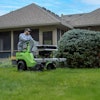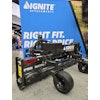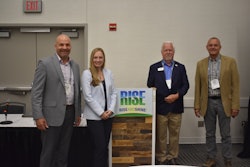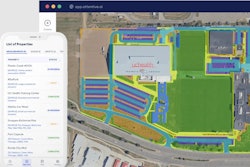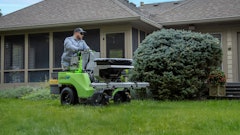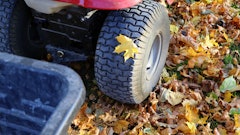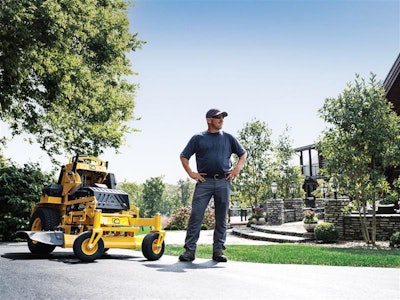
Sponsored by Cub Cadet
Innovation is a term that gets tossed around a lot. The pursuit of the next great idea is what gets the team at Cub Cadet® up each morning. But there’s a big difference between new and better. Innovating just for innovation’s sake should never be the end goal.
Great innovation begins with the customer. The merit of a new product, feature or service is defined by the problems it solves for the individuals it serves. Cub Cadet prioritizes a customer-first approach to innovation, which is critical for success in today’s lawn and landscaping industry where every dollar counts.
Cub Cadet listens to landscapers, fleet managers and municipalities to better understand their businesses. The more we understand, the more we know their pain points and the better we can develop innovative solutions to help resolve their problems.
One example of putting this philosophy into practice was our approach to designing Cub Cadet stand-on mowers. Before even building our first prototype, the team engaged more than 100 landscapers about their experiences with stand-ons. Cub Cadet learned about the traits, features and quirks landscapers liked and disliked most, noting their ideas about what could be improved. All provided valuable information for our product development team and engineers, but the collaborative process didn’t end there.
The end-users were brought along at each step of the prototyping journey, where they were given opportunities to evaluate the progress early and often. Changes and tweaks were continuously made based on their feedback until Cub Cadet finally had a product that was ready to enter our professional test-drive process — a final step where all Cub Cadet commercial equipment spends a minimum of one season with landscapers in the field before officially launching.
Innovation Drives Cub Cadet
From a distance, Cub Cadet PRO X™ commercial stand-on mowers may not scream innovation. There are no flashy design overhauls or wild features. But look closer and see the adjustable suspension platform and pads for operator comfort, the deck lift with easy-to-use levers and magnetic pins and the 24-inch tires that easily hop curbs. These carefully considered features all add up to a mower that’s greater than the sum of its parts.
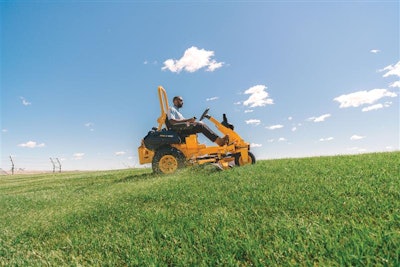
“We spend a lot of time out in the field, one thing I really value our company does,” said Aaron Griffith, Cub Cadet PRO national sales manager at Stanley Black & Decker. “Our product development team spends a lot of time in the field, visiting with landscapers and really tries to understand what pain points they have. They may not always have the answer on what they need to fix that problem, but that’s where the product development team and the engineers can come in and say, ‘Hey, we see this problem,’ this is what we believe can solve it, so it’s really about not just sitting behind a computer and coming up with ways to innovate, but really listening to the operators of this equipment, and the fleet managers and everyone involved in the landscape community to try to develop products that will help solve their problems.”
There also are challenges that force us to think outside the box, question the way things have always been done to design features that help solve problems.
For instance, many Cub Cadet dealers live in areas with uneven and sloped terrain that has historically been difficult for their customers to navigate. On a traditional lap bar zero-turn mower, the operator must cut across hills with the front wheels elevated at an angle because all the stabilizing force rests on the rear wheels, the front casters only serve to keep the mower straight. Turning while on a steep incline often causes the wheels to kick out, which can tear up the grass and ruincut lines.
To address these issues, Cub Cadet introduced SurePath™ steering wheel controlled zero-turn mowers that give the operator control of all four wheels.
Unlike traditional lap bar units, the steering wheel gives operators control of the two front wheels, which helps hold a line comfortably on hills. And the true innovation comes into play with the four-wheel steering system, where linkages run from the front wheels to the transmission, allowing the inside rear wheel to counterrotate in a zero-turn. This helps to minimize the chances of tearing up the turf — an issue many landscapers face on both sloped and flat terrain.
“We’ve got to continue to innovate,” Griffith said. “We can continue to build lap-bar zero-turns. We can build hydro walks that have been around for 40 years now. Those are still going to continue to be the main staples of the industry, but as labor shortages continue to rise, fuel prices continue to rise, the operating cost of a landscaper continues to rise. I believe it’s our duty as the manufacturers of those products to be able to try to come up with ways to innovate and make them more efficient, whether it’s a brand-new operator, or a seasoned operator, let’s get that efficiency up to par on both sides of that.”

